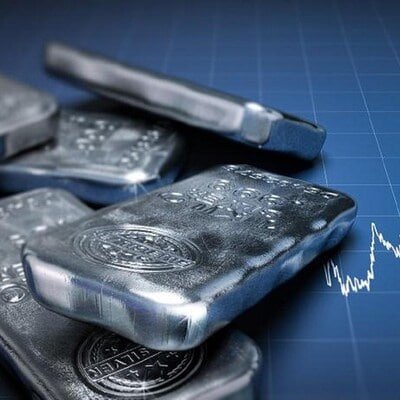Investor interest in silver is rising significantly in 2024, with assets under management in silver exchange-traded funds crossing Rs 5,000 crore. The white metal has gained around 16 per cent since January. Silver is often clubbed with gold when it comes to asset allocation but the two precious metals have significantly different profiles while retaining some similarities. Like gold, silver is considered a hedge against inflation and economic uncertainty to a certain extent. Like gold, it is also easily traded and can be liquidated quickly for cash but there are more transparent corporatised mechanisms for selling gold or taking loans against it. Such mechanisms are not available for silver. As with gold, India imports large quantities of silver and is one of the world’s largest silver consumers. Most silver imports come via West Asia, with a duty of 12-15 per cent, depending on the exact route for import. Like gold, silver too has an inverse relationship with the dollar since international prices are dollar-denominated. A strong dollar often leads to a weaker price trend in silver.
However, unlike gold, silver has a serious industrial profile. Gold has few, limited industrial and scientific applications outside of its decorative qualities, and less than 15 per cent of gold is used for such purposes. In contrast, more than half of annual silver consumption is driven by industrial uses, and this demand is slated to rise a fair amount due to its use in health care, and in “green” industries. Silver’s industrial applications exploit the metal’s high conductivity (which is the highest for any element in both electricity and heat) as well as its sensitivity to light and its antibacterial qualities. Silver is a raw material in solder and in welding and brazing alloys. It is also used as raw material in batteries, and in dentistry. It has increasing demand due to being used in medicine, solar energy, radio-frequency identification chips, semiconductors, cellphone touch screens, and water-purification systems, among others.
Demand triggered by the solar energy/photovoltaic industry alone is growing at an annual rate of 12 per cent, while chip-related silver consumption is also growing fast, as is demand from water-purification systems and other anti-bacterial applications. Many of these applications are in industries that have strong, secular growth profiles. Investors in silver need to take into account its industrial profile and the promise of demand growth due to industrial utility when considering exposure and asset allocation. Arguably, silver could be considered an industrial metal in the same way as the more exotic platinum, which also finds many industrial applications. While gold is linked to economic cycles due to its ability to ride out inflation, silver has a more complex relationship with the macroeconomy due to the many industrial uses. The supply of gold is also more limited.
Financial advisors often suggest that there be a small asset allocation to gold — 5-10 per cent in individual portfolios — to provide diversification. Silver could be recommended because although it is a less powerful hedge against inflation, it too has an industrial profile. However, silver prices will likely weaken in the short term because of an expected delay in interest rate cut by the Federal Reserve. But a recovery in global economic activities, particularly in the high-tech areas mentioned above, is likely to keep savvy investors interested.
Subscribe To Insights
Key stories on business-standard.com are available to premium subscribers only.
Already a BS Premium subscriber?LOGIN NOW
MONTHLY₹9/day
₹249
Renews automatically
Select
SMART ANNUAL₹5/day
₹1699₹1999
Opt for auto renewal and save Rs. 300 Renews automatically
Select
Select

